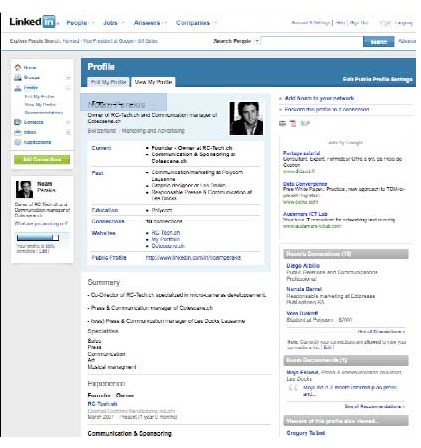****Read below a clarification from Spencer Stuart
Early in November 2012, Spencer Stuart, a global leader in recruitment of senior management, announced a change in its method of work. Ahead of its time or reckless?
For over 55 years Spencer Stuart has been recruiting executives on behalf of the world’s largest companies. It’s business asset is its network of candidates, woven carefully to locate and identify the best skills and their expectations and motivations.

So what is the revolution?In a few days, the very well known headhunter will no longer update his candidates database and will rely on LinkedIn instead. Candidates can no longer complete the registration form on the Spencer Stuart site nor update their personal data nor insert a new CV. Now, Spencer Stuart will invite candidates to join him on the network.
At Spencer Stuart it’s reassuring and positive – the candidate just updates his profile in a single location, and then his skills, experience and CV are accessible by all recruiters in the firm. From the company’s side, the new organization will therefore allow it to improve efficiency and concentrate on more strategic tasks than updating a record.
The bet is daring: it presumes firstly that all candidates are willing to be on the LinkedIn network, including the most senior. Secondly, Spencer Stuart finds itself with both hands tied to the social network, which is the sole owner of strategic and technological choices.
This shift not only raises doubts but also many questions. Can a client who is a member of the LinkedIn group freely contact candidates directly on the network? What significance does Spencer Stuart now attach to the virtual recommendations of its candidates on LinkedIn?
**************“An Important Clarification from Spencer Stuart:
We wanted to address some incorrect information in this posting about our approach to executive search and handling of candidate information, recognizing that some may have drawn incorrect conclusions because of a less than clear note we sent to those registered on our website regarding a planned change in our online registration process.
We want to underscore that we are not moving away from our proprietary executive database or transferring our business to LinkedIn. In fact, we are near completion on the most extensive upgrade to our industry-leading executive knowledge system in our history. Some have unfortunately interpreted some changes on our website as a broader statement about our approach to search and how we develop and manage candidate information. In hindsight, we wish we had been more explicit.
The main intent of our note was to explain that when visitors come to our new website (to be launched soon), they will have an option to give us permission to be informed automatically about updates to their career information via their LinkedIn profile. Those who elect to provide permission for us to access their LinkedIn profiles can rely on the same discretion and confidentiality they would expect today. It is also worth noting that we do not use LinkedIn as a source of references.
This change does not impact our overall approach to finding candidates. The majority of our candidates are developed through direct interaction with our search professionals, as an outgrowth of our work and research, rather than through inbound traffic to our website — a channel that represents but one particular doorway of many into our firm..
As part of our related outreach regarding the website, we have received feedback that there is a desire for us to continue to have a direct resume submission feature on the site. As such, we will continue to retain this feature moving forward.
We appreciate the opportunity to clarify some misperceptions as to where we are headed with specific changes to our website.”